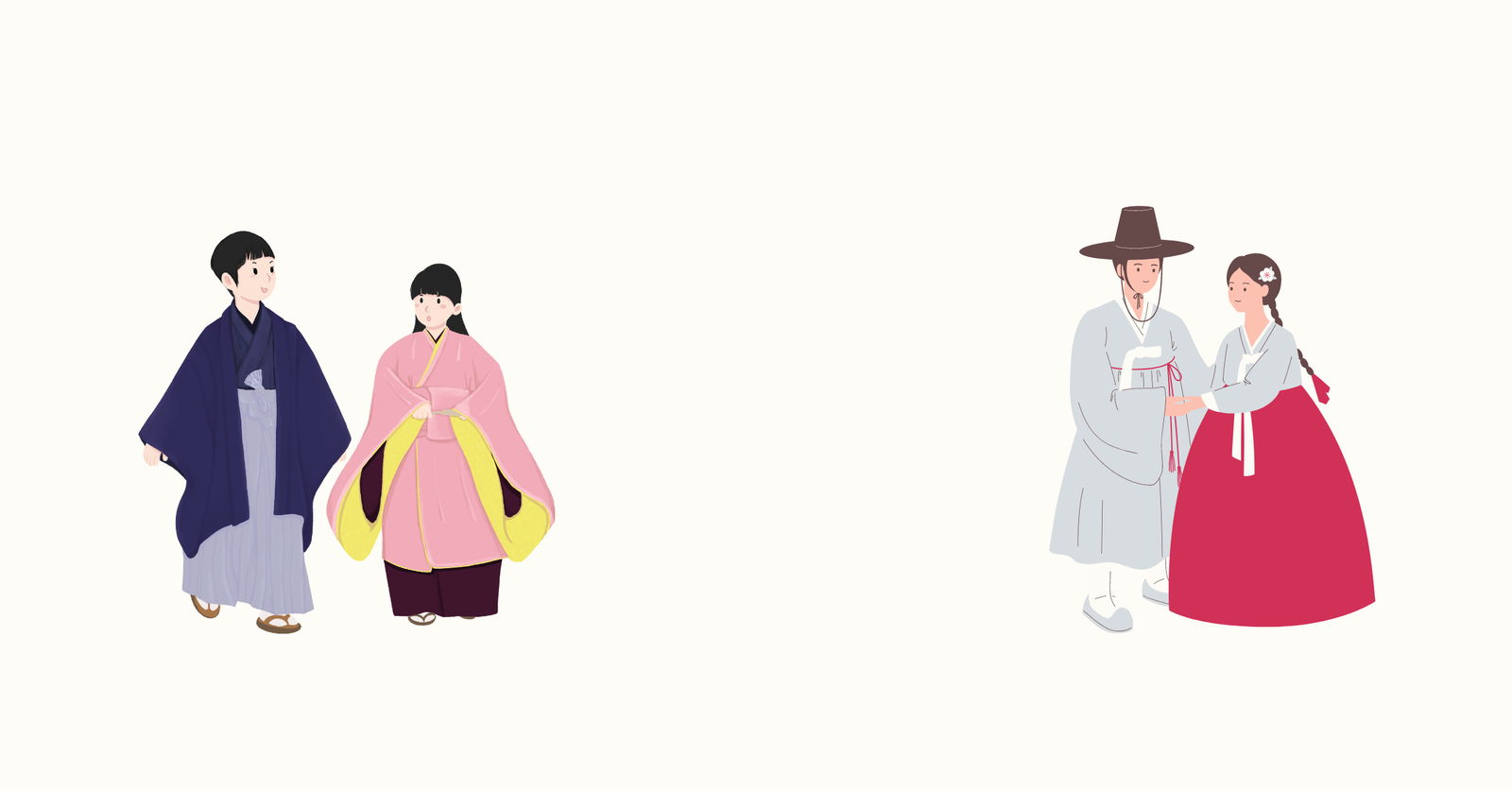Traditional costumes in Japan (kimono), China (hanfu), and Korea (hanbok) are increasingly capturing people’s attention. These garments are not only beautiful but also embody the rich cultural heritage of their respective countries. However, what are the differences between Kimono, Hanfu and Hanbok? This article aims to help simply clarify these differences for you!
The traditional costumes of these three countries include formal, semi-formal, and casual styles. In the following sections, we will focus primarily on the semi-formal styles as representatives for each one. This is because semi-formal style tends to be the most commonly chosen option nowadays. Formal styles are often too expensive, while casual ones are generally not worn with as much intention or significance.
1. Female costumes of Japan China and Korea
The traditional dresses for women in these three countries are actually quite different. This means that it’s easier for us to distinguish the female traditional dresses than the male ones among the three countries.
1-1. Female Kimono (Japanese)
The kimono is highly tailored and features straight lines, giving it a distinctly rectangular feel. Another key characteristic is the wide belt, called an ‘obi,’ which is about 30 cm wide and tied around the waist. The obi is knotted at the back in a rectangular shape like a pillow.
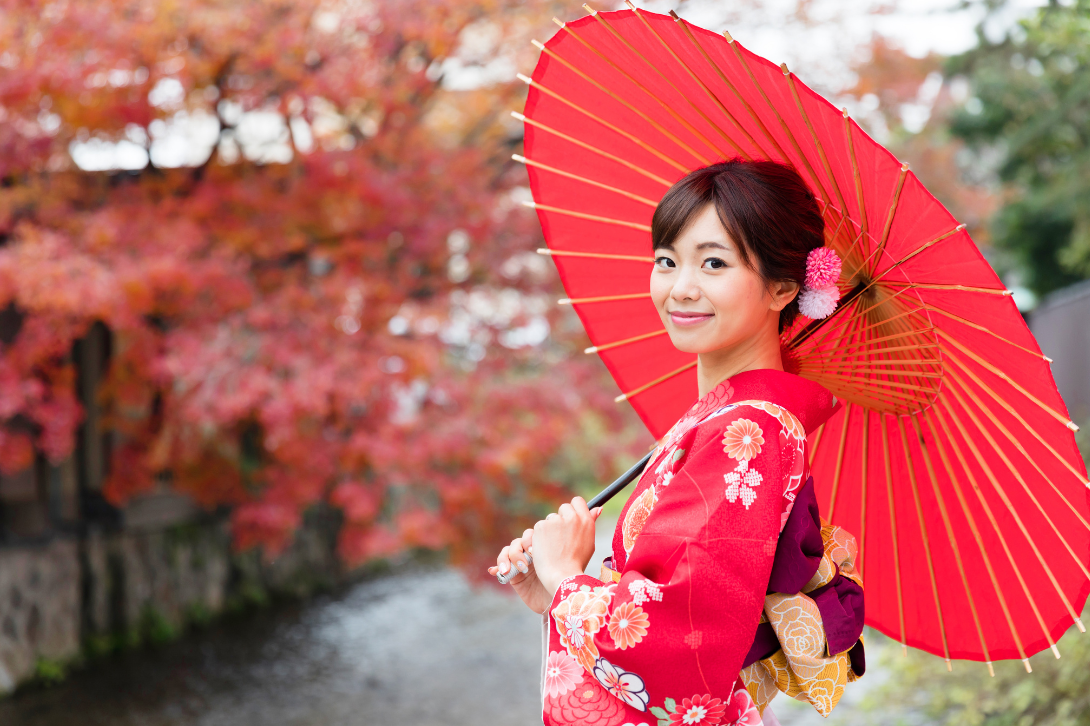
The hem of women’s kimonos is relatively narrow, and when paired with thick-soled geta (traditional wooden footwear resembling flip-flops), it creates the impression of slow, deliberate movement while walking.
1-2. Female Hanfu (Chinese)
As one of the oldest civilizations in the world, China has witnessed numerous dynasties, each contributing to the rich tapestry of its costumes. In this piece, I would like to focus on the Tang Dynasty, renowned for its significant influence on Chinese history and culture. Personally, I find its style particularly captivating.
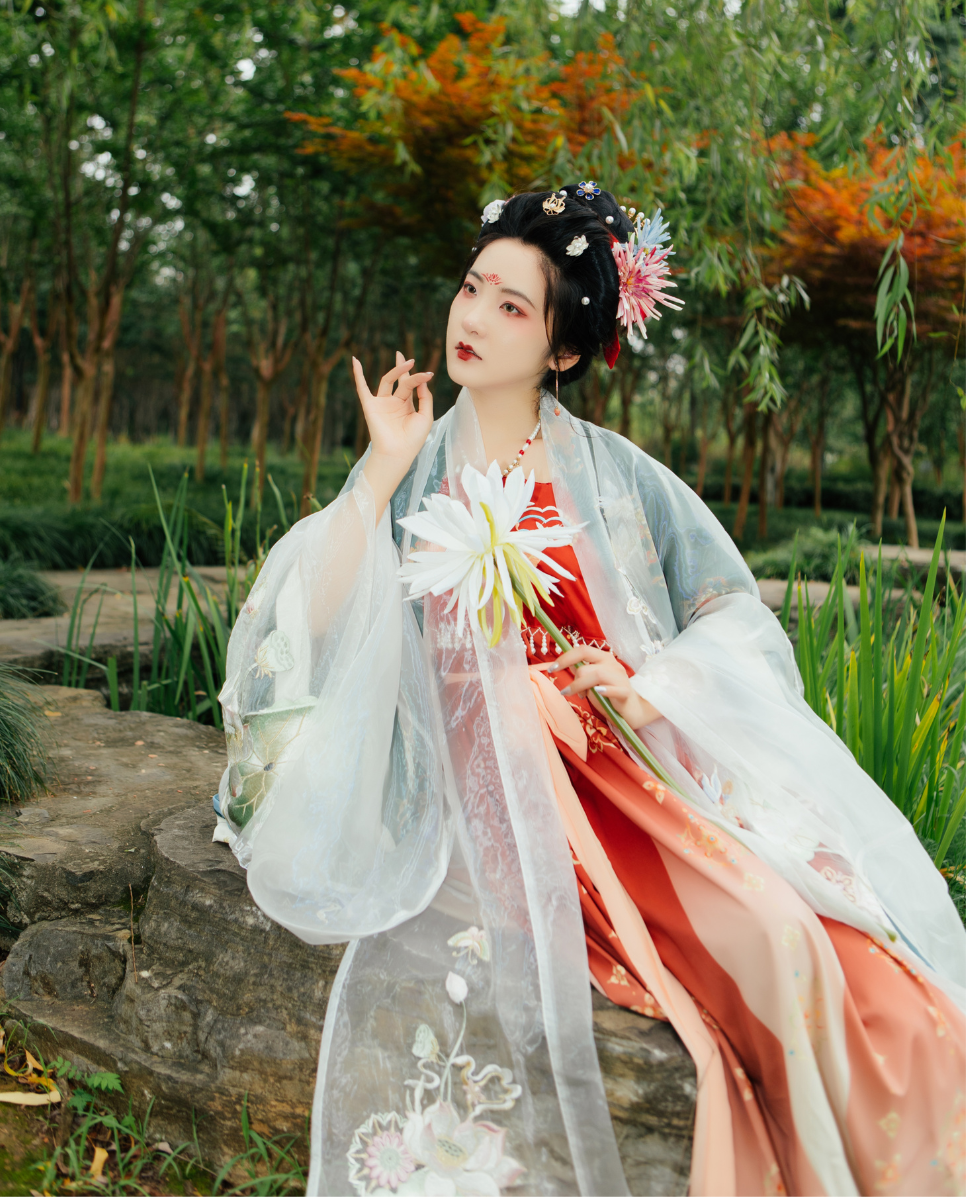
The Tang dynasty-style female Hanfu is the most graceful among the traditional costume of the three countries. It exudes an air of lightness and elegance, largely due to its typical use of silk gauze. The lightweight fabric gives it a layered and intricate appearance. The top is relatively short, with two ribbons draping from the waist, and the sleeves are wide and long.
1-3. Female Hanbok (Korean)
The flowiness of the Hanbok is somewhere between that of the kimono and Hanfu. Like the Hanfu, its top is short. However, the key difference is that the skirt is usually tucked into the top. In addition, the skirt is wide and structured. The ribbon, called “goreum,” is tied at the collar.
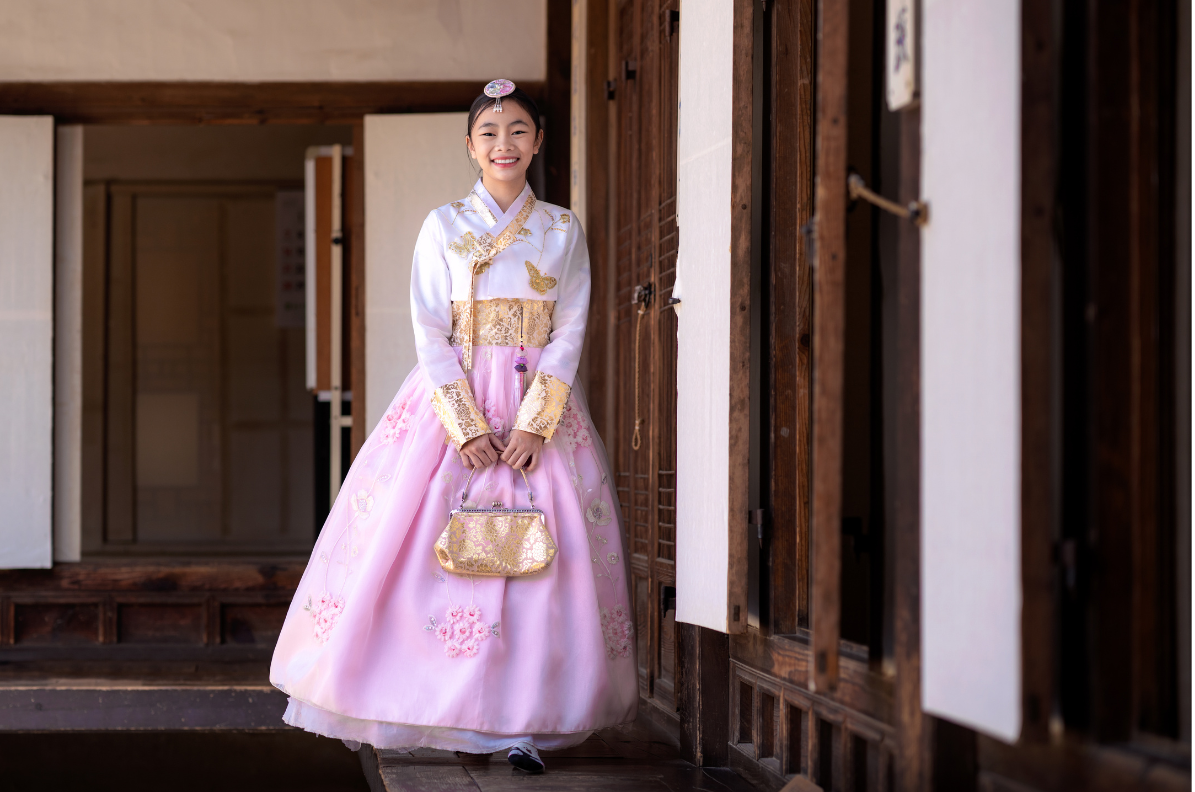
In general, female hanbok gives an impression of being structurally similar to medieval gowns from European countries, though there is no direct connection between them.
2. Male costumes of Japan China and Korea
Unlike female costumes, male ones can sometimes look quite similar. Male Kimono, the Japanese one stands out as the most unique, while those of China and Korea tend to resemble each other more closely.
2-1. Male Kimono (Japanese)
The haori, resembling an oversized jacket, is a key feature of male kimono. Female kimonos can also include the haori though. The undergarment of male Kimono is rectangular, also a typical trait of it. It has a “Y”-shaped collar and a cord called “haori himo” is tied around the stomach area.
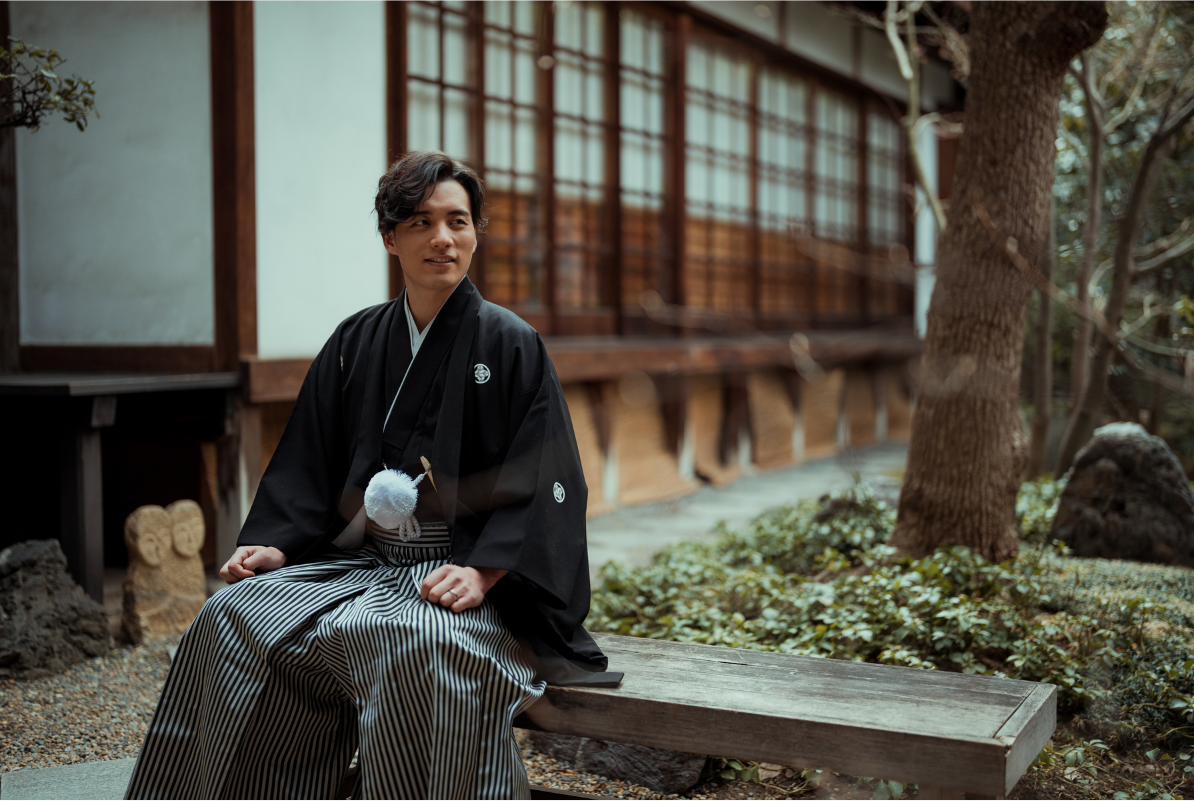
Similar to the female kimono, an obi belt and a pair of geta are also worn with the male Kimono. The colors for male Kimono are usually simple, typically white, gray, or black.
2-2. Male Hanfu (Chinese)
Let’s continue to use the Tang dynasty style as a representative of male Hanfu.
The sleeves of male Hanfu are wide and large, giving the garments a fluid appearance. Some styles are adorned with embroidered patterns, often featuring auspicious symbols from Chinese mythology and folklore, while others have a plain base. There are several collar types, including “Y”-shaped, round, and open collars.
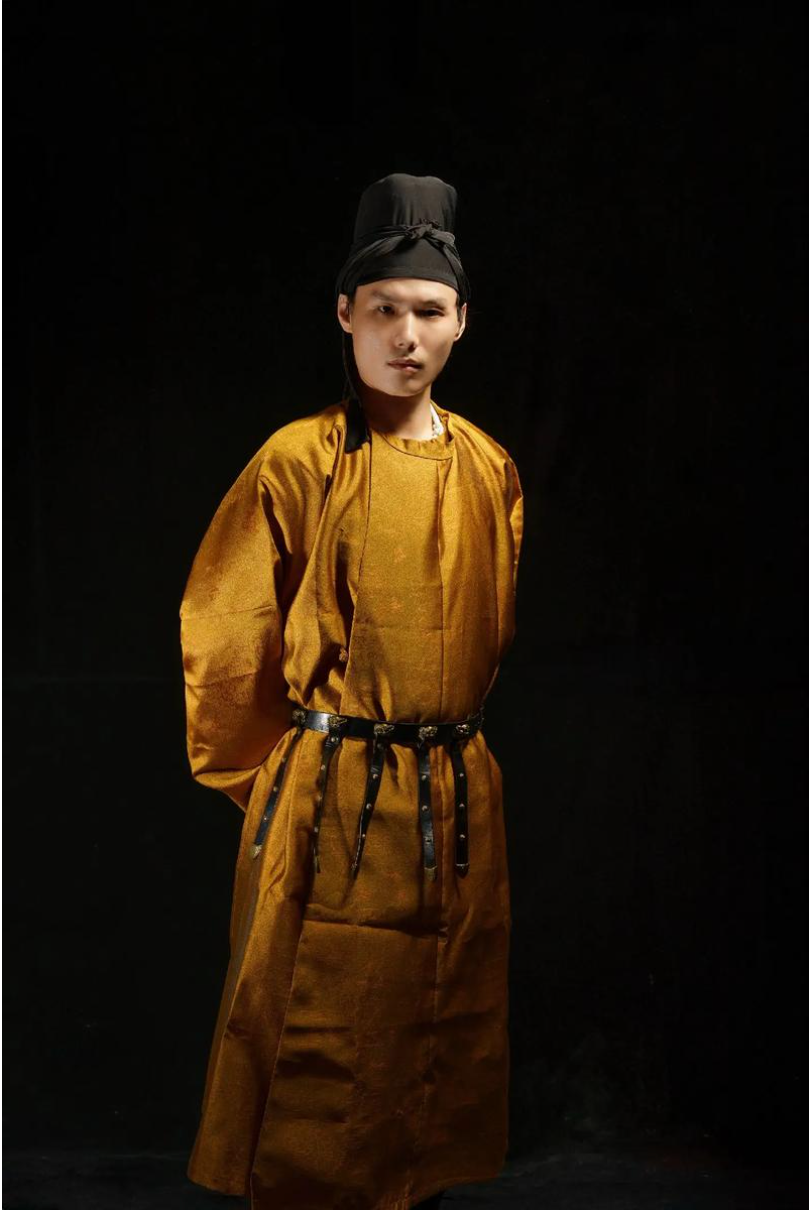
The colors of men’s Hanfu are quite diverse, ranging from black, white, and gray to vibrant hues. Furthermore, men’s Hanfu features a narrow belt, which contrasts with the wider belts seen in male Kimonos. Footwear is another significant distinction, as men’s Hanfu is typically paired with boots.
2-3. Male Hanbok (Korean)
Male Hanbok can resemble male Hanfu because of the close proximity of Korea and China, leading to some cultural and stylistic integration. Three significant traits of Hanbok are: (1) a hat with a round brim, (2) vest, and (3) a ribbon hanging down. While these characteristics can also be found separately in the clothing of other Chinese dynasties, they appear together in Hanbok.

3. Do Japanese, Chinese and Korean people still wear traditional costumes
Yes, that’s correct. However, the frequency of wearing traditional costumes can vary depending on the country in question.
However, it appears that there are no academic statistics related to this topic. I can only share my personal observations. One thing is certain: like many other regions in the world, people in these three countries do not wear their traditional costumes in their daily lives.
Among the three countries, Korean people wear their traditional costumes the most frequently. In addition to significant events like weddings and funerals, they also don Hanbok for many traditional festivals. Furthermore, many historical sites, such as Gyeongbokgung, offer free admission to visitors dressed in Hanbok.
Japanese people rank second in terms of the frequency of wearing their traditional costumes. Currently living in Japan, I’ve observed that the older generation, especially women, wears kimono most frequently.
For the younger generation, those who turn twenty in a given year often choose to wear kimono on the second Monday of January, which is celebrated as “Coming of Age Day.” Plus, some students also wear Kimono during their university graduation ceremonies.
Chinese people wear their traditional costumes the least frequently. Wearing Hanfu is more of a hobby than a widely accepted practice. Unfortunately, even some Chinese individuals find it strange or dramatic to wear their traditional attire. There is still a long way to go to achieve a Hanfu renaissance.
4. How much does it cost to buy Kimono Hanfu and Hanbok
As we mentioned before, three of the costumes have different varieties such as formal and casual ones and different quality.
For kimonos, according to statistics from kimono-rentalier, a set costs between 300,000 and 400,000 Japanese yen (2,100 to 2,800 USD).
As for Hanfu, according to Taobao, the largest e-commerce platform in China, most items fall within the price range of 100 to 500 Chinese yuan (14 to 70 USD).
For Hanbok, according to the Seoul Insiders’ Guide, the cost ranges from 200,000 to 500,000 Korean won (150 to 375 USD).
I know it’s surprising to see such a significant price gap among the three types of costumes, but that is the reality.
5. Conclusion
I believe the costumes of the three countries each have their own unique charms. These traditional garments reflect a country’s culture, daily life, and history. Nowadays, growing interest in protecting ethnic culture has led to events like World Ethnic Day, where you can enjoy a variety of ethnic dresses!
